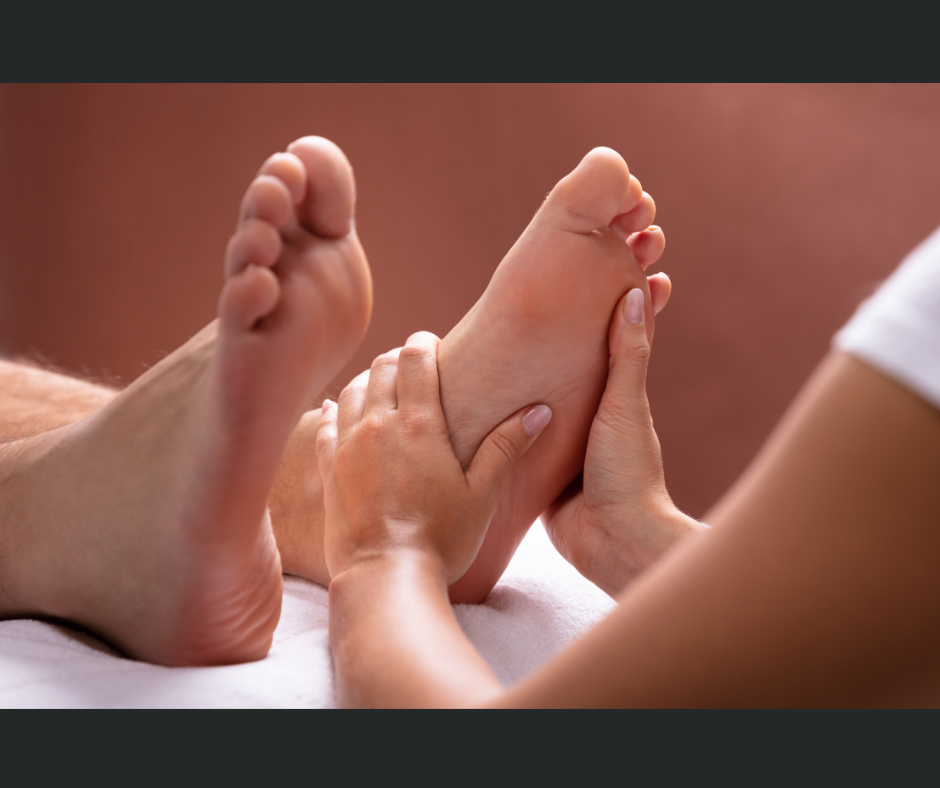Foot reflexology is centuries old. The method of natural health care is used by many peoples in cultures around the world. It cannot be determined exactly where this method has its origins, perhaps it is even as old as humanity itself. What can be said with certainty is that about 5,000 years ago in India and China, people were already being treated by applying pressure and/or massage to certain points of the body, including the feet, to influence the organs. Furthermore, in Ancient Egypt (3200 BC), a wall painting was found in a tomb by a very important doctor from Anchmahor, showing a treatment of the reflex zones on the hands and feet.
Even among American Indian tribes, healing methods in which the treatment consists of massage of the hands and feet have been passed down from generation to generation for centuries.
There are numerous more examples of cultures in which this kind of natural medicine is practised applied.
applied. Apparently, therefore, sick people have for centuries intuited themselves from numerous variants of
operated pressure on certain parts of the body to overcome diseases.
For more recent development of foot reflexology massage, American physician Dr Fitzgerald (1872-
1942) was of great significance. He was aware of the folk medicine of the Indians and
related these to his practice. Indeed, he had discovered in his own patients that massage of certain zones and/or points on the foot made an organ function better, could relieve pain, and even make it disappear. He studied this further and discovered that different zones in the body were interconnected. This is how he discovered the zone theory and wrote a pioneering book about it.
Dr Joe Shelby Riley, US physician, further explored these therapeutic possibilities and
elaborated. A therapist who worked with him, Eunice Ingham, studied all his notes and started massaging people's feet. In her studies, she compared and mapped sensitive spots on hands and feet with the anatomy of the body. In this way, she was able to draw the whole body on the hands and feet. It was Eunice Ingham who made hand and foot reflexology known by travelling around the world with her cousin Dwight Beyers. She eventually opened her own practice and founded a school in Florida called The international Institute for reflexology, where she taught foot and hand reflexology.
Functioning of foot reflexology
Foot reflexology is a therapy that focuses on treating reflex zones on the feet in order to
normalise bodily functions. But how does it actually work? Foot reflexology involves stimulating specific reflex zones on the feet. These reflex zones are connected to different parts of the body, such as organs, muscles, glands and other systems. By working these zones, the therapist can influence the corresponding body parts and functions.
There are several techniques and treatments within foot reflexology that can be used.
Traditional foot and hand reflexology is a popular form that involves only the feet or hands
are treated. This can be used both preventively and curatively.
Foot reflexology has many benefits and can be helpful for a variety of complaints.
It can provide relief for tension headaches, stress-related complaints such as burnout and
depression, respiratory problems like asthma or bronchitis, sinusitis, hormonal complaints, digestive problems, insomnia, back and neck pain, nerve pain and much more....
Foot reflexology can even provide support during pregnancy, with mobility problems,
energy deficiency or overtiredness, fibromyalgia and rehabilitation after illness or an accident.
In foot reflexology, not only the reflex zones of the affected area are treated, but also
possible causes of complaints that may lie elsewhere in the body. This broader approach allows complaints to be addressed more effectively.
Foot reflexology helps normalise body functions and supports self-healing
ability of the body. Before undergoing any treatment, it is important to consider your individual needs and consult an experienced foot reflexologist.
Together with the therapist, you can discuss which techniques and treatments are suitable for you.
It is a safe therapy that can be used as an alternative medicine and can be a valuable
complement other treatments and healing modalities. Discover for yourself the wonderful world of foot reflexology and experience the positive effects on your body and mind.
Types of treatments within foot reflexology
Within the world of foot reflexology, there are different types of treatments that can be used
become. Each treatment has its own unique techniques and approaches, all aimed at
on restoring balance in the body. Below are some of the most common
treatments discussed.
One of the most well-known forms is traditional foot and hand reflexology. This form uses
of relaxation techniques and pressure point techniques on both the hands and feet. Through the
stimulating specific reflex zones attempts to repair disturbances in the body and
activate self-healing capacity.
A relatively new technique within foot reflexology is vertical reflex therapy (VRT). At VRT, the
feet treated while the client is both standing and lying down. This allows a deeper effect to be achieved, as the weight of the body helps stimulate reflex points.
Relaxing foot massage is also a common treatment within foot reflexology. This
form focuses particularly on relaxation and stress relief. Through various
massage techniques, deep relaxation is experienced. Each treatment within foot reflexology has
its own unique approach and techniques. It is important to work with an experienced therapist to
see which treatment is suitable for your specific needs.
Baby reflexology is a specially developed form of reflexology. The techniques are primarily
developed to create more connectedness. After research, it was found to contribute nicely to alleviate, facilitate and remedy many complaints and symptoms of babies.
The aim of baby reflexology is to relax the baby and relieve pressure. Baby reflexology is
targeting areas of the feet or hands, creating relaxation in
corresponding organs.
Where massage stays more on the surface, reflexology goes into depth.


